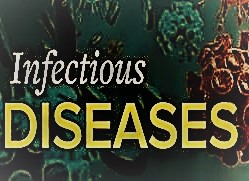Pathogenic microorganisms, including bacteria, viruses, fungi, and parasites, are the source of infectious diseases. These illnesses have the potential to significantly affect public health and can spread from person to person. Developing effective preventative and treatment measures requires a thorough understanding of infectious illnesses. The fundamentals of infectious diseases, such as their types, transmission, and effects, are examined in this article.
The Infectious Disease Definition:
Microorganisms that enter the body can cause infectious disorders. These microbes can grow and harm the host. The word “infectious” denotes the ability of the illness to spread from one person to another. These viruses’ ability to spread is dependent on several variables, including the host’s immune system and their route of transmission.
Pathogen Types:
Pathogens are organisms that cause infectious diseases. They include bacteria, viruses, fungus, and parasites. Each kind has unique characteristics and ways of causing illness. Single-celled organisms called bacteria are the source of illnesses including strep throat and tuberculosis. Even smaller viruses require a host cell to multiply, such as the ones that cause HIV and the flu. A parasite illness that can harm numerous human organs, malaria is different from the fungal infection that causes athlete’s foot.
Transmission Modes:
Infectious diseases can spread through a variety of channels. Viruses are considered to be airborne when they move through the atmosphere. Contact transmission is the result of direct or indirect contact with contaminated surfaces or bodily fluids. Insects such as mosquitoes are the vectors of transmission. Comprehending these modes facilitates the implementation of suitable control mechanisms.
Signs and Prognosis:
Infectious disease symptoms might differ greatly. These may consist of diarrhea, coughing, fever, or exhaustion. Medical investigations such as blood tests, cultures, or imaging studies are frequently necessary for the diagnosis of these disorders. An early diagnosis is essential for the proper treatment of a disease and its prevention from spreading.
Preventive Techniques:
Managing infectious illnesses requires proactive measures. Vaccination, which provides immunity against certain illnesses, is one important strategy. It is possible to reduce your risk of sickness by using proper hygiene practices including hand washing and surface sanitization. Campaigns for public health and education are also essential for raising awareness and encouraging preventative measures.
Options for Treatment:
The type of pathogen involved determines the course of treatment for infectious disorders. Treatment for bacterial illnesses involves the use of antibiotics, whereas treatment for viral problems involves the use of antiviral drugs. Antifungal drugs are used for fungal infections, while antiparasitic drugs are used for parasite infections.The particular ailment and its severity dictate the therapy option.
New Infectious Illnesses:
Conditions like urbanization and climate change can lead to the emergence of new infectious illnesses. Emerging diseases can provide serious difficulties because there may be no reliable therapies or vaccinations available. To recognize and address these emerging dangers, research and monitoring are essential.
Public Health Effects:
Public health can suffer significantly from infectious diseases. They could cause widespread illness and increase the cost of medical care. Epidemics and pandemics such as COVID-19 highlight the need for international cooperation in the fight against illness. Effective public health actions are essential to reducing these impacts.
Global Initiatives to Combat Illness:
Worldwide efforts to control infectious diseases involve a multitude of projects and organizations. In order to coordinate international responses and provide supplies, the World Health Organization (WHO) is essential. Cooperation between nations and organizations facilitates the exchange of knowledge and approaches to the fight against illness.
Prospective Courses:
The subject of infectious disorders will see further advancements in the future thanks to scientific and technological improvements. Improved sickness prevention is expected to come from developments in diagnosis, treatment, and immunization. Meeting the changing concerns that underpin the control of infectious disorders requires constant observation and adaptability.
Conclusion:
A significant public health concern, infectious illnesses have a wide range of effects on both persons and communities. A complete strategy is necessary, ranging from comprehending the different types of infections to putting into practice efficient preventative and treatment measures. The management of infectious diseases will face problems in the future that will require global cooperation and continuous study. Maintaining awareness and taking proactive measures can help combat these pervasive health hazards. infectious diseases for example COVID-19 and monkeypox.
